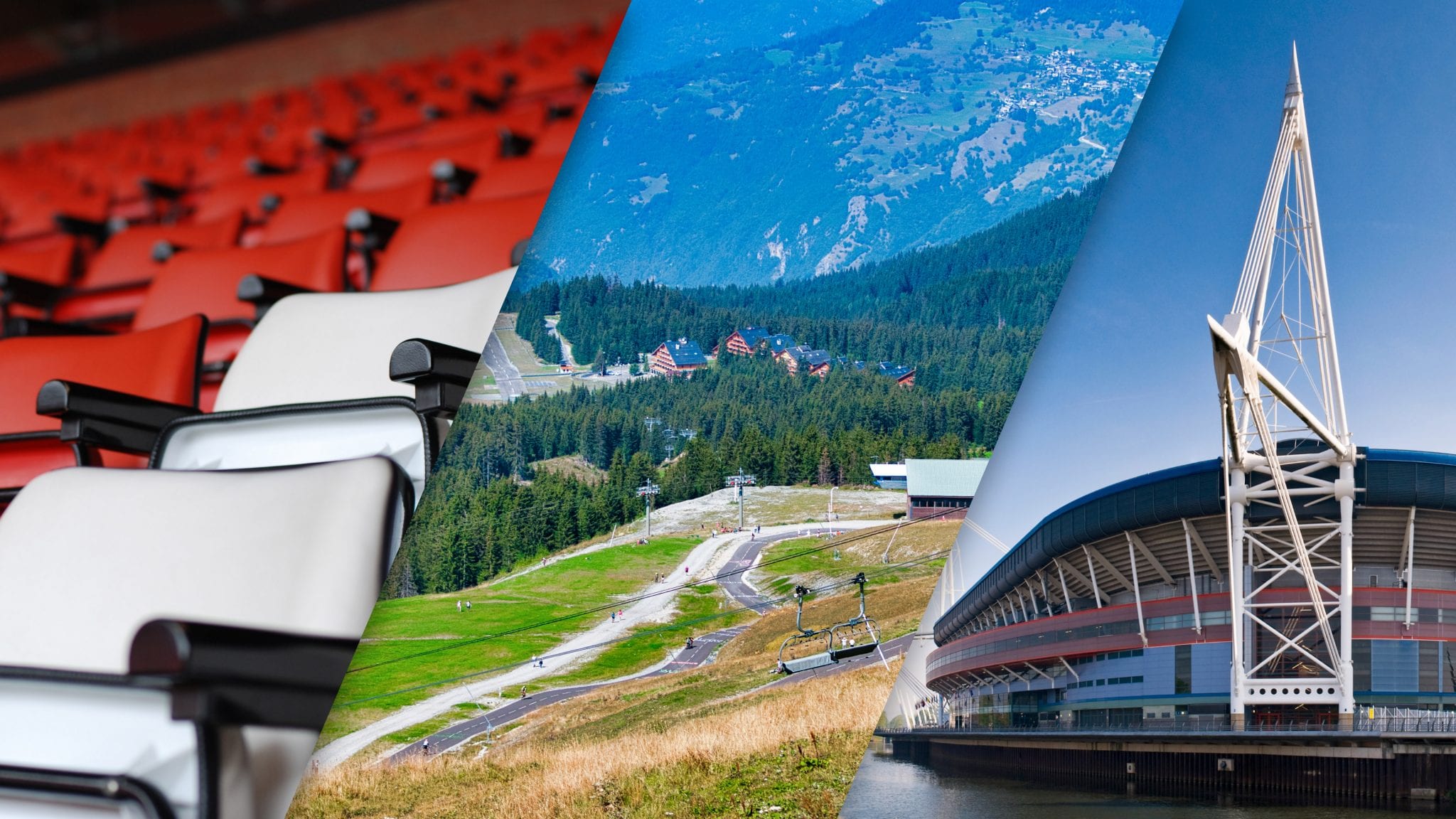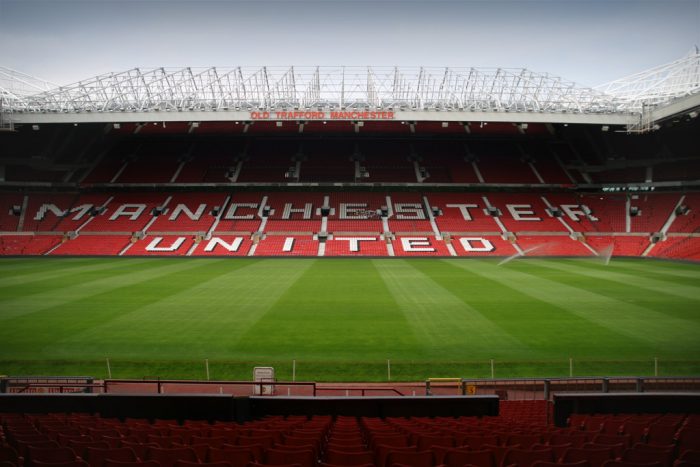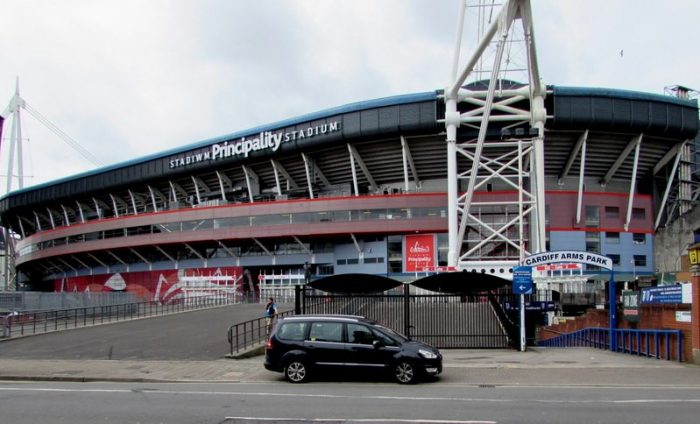
Sport is an important part of normal life. And whether you regularly go to the game or tune in from home, sports venues are vital for creating the right atmosphere and providing a fitting backdrop for those make or break matches.
But with the COVID-19 pandemic, many sports venues had to close and then adapt as part of efforts to contain the virus.
Fortunately for European sports fans we’ve enjoyed some sensational competitions once again this Autumn – from the Six Nations rugby to the cycling Grand Tours. That’s thanks to incredible work from construction and facilities maintenance teams to adapt venues to make them safe, while maintaining their character.
Here’s how three iconic sports infrastructures are adapting to COVID-19 – and how technology is helping.

For football fans, the long-awaited resumption of the Premier League when the UK lockdown eased in June was an extremely welcome step towards normality. But with games conducted behind closed doors, the next question was when fans might be able to return to matches – and specifically whether stadiums could accommodate social distancing.
One club making efforts to adapt and welcome fans is Manchester United. Old Trafford, one of the world’s most famous football grounds, normally holds 75,653 fans, making it the third largest stadium in the UK.
Over two months, a number of new measures were implemented to keep spectators safe when they return. According to the club, systems including new layouts, timed arrivals and temperature checks would allow the stadium to accommodate 23,500 fans or around half of the season ticket holders.
Digital modelling tools can play a key role in redesigning spaces like Old Trafford for social distancing. With data on the capacity of the space and people’s typical movements, planners can better understand the changes needed.
Models can be used to redesign entrances, exits and ticket barrier openings – and enable facilities managers to update layouts as government guidelines evolve. Importantly, 3D models can enable non-specialists to visualise proposed designs, helping clubs to involve a wide range of stakeholders from the club board to local government.
With England returning to lockdown in November 2020, it may be some months before fans are back at football grounds like Old Trafford. But with the changes being made, many clubs hope to be ready soon.

The next icon of sporting infrastructure isn’t really dedicated to sport at all. The three Grand Tours of road cycling are actually famous for celebrating all the architecture and engineering feats of their countries – whether it’s the cobbled streets of Milan or the famous sprint finish on the Champs-Elysée, Paris.
A particular highlight from this year’s Tour de France was a newly built mountain road over the Col de la Loze, which was originally designed as a cycle path between two ski resorts, but was extended by 6km to allow a spectacular summit finish on stage 16 of the race.
But before it was certain that the 2020 race would go ahead at all, the organisers took matters into their own hands – and went entirely digital. With cycling platform Zwift, the organisers launched a virtual Tour de France. Cyclists competed from home, using virtual avatars powered by stationary bikes to take on six stages, including four modelled on real world French routes.
This kind of 3D model is familiar in construction, where the technology is used for everything from sophisticated engineering design to planning the supplies and schedules needed for projects. But the virtual Tour de France is a reminder of how models can help people to visualise and engage with designs long before construction starts, supporting client satisfaction and site safety.
The virtual Tour is a perfect example of how useful digital representations can be when we can’t get to locations in person. Past UK winners including Chris Froome and Geraint Thomas even attended – although neither took the (digital) yellow jersey this time.

The Six Nations Rugby Championship came to a dramatic pause in March 2020, when the participant countries went into lockdown just as the final round of matches was due to be played. In fact, Scotland’s players were actually on a coach to the Principality Stadium in Cardiff when they learned that the match would be cancelled.
The last games were finally played in November eight months later, but the Principality Stadium wasn’t in action. That’s because this incredible venue actually adapted to COVID-19 by transforming into the UK’s second biggest field hospital to help fight the virus.
The Ysbyty Calon y Ddraig or Dragon’s Heart Hospital was the result of a hugely impressive construction operation. Hospital capacity in the UK needed to expand rapidly, to respond to huge increases in patient numbers.
As a result, design and construction of the hospital were significantly condensed; Project Director Ciaran Willcocks reported that a process that usually takes two years was completed in five days. This mirrors the speed of other Nightingale Hospital projects around the UK, such as the Birmingham facility which was built in just nine days.
Innovative thinking was needed to complete the Cardiff project rapidly. Modular construction was used as much as possible for speed, including temporary plug and play air handling units and chillers. Events specialists were brought in to deliver five huge tents across the pitch. Clever use was made of existing structures throughout the stadium, including holding project management meetings in the press box and creating office spaces in the dressing rooms.
Thanks to an incredible feat of collaboration, 1,500 hospital beds were prepared by the end of April. Like many of the NHS field hospitals, thankfully the full capacity of the Dragon’s Heart Hospital wasn’t needed. But the site offered a vital safety net during the first wave of the pandemic.
Wales’ final match of the Six Nations was played out in the Parc y Scarlets, where sadly the home team was defeated by Scotland for the first time in Cardiff. But as the Principality Stadium returns to use as a sporting venue, the creation of the Ysbyty Calon y Ddraig is still an important victory for Wales.
With lockdowns, social distancing and all kinds of logistical challenges, the fact that sporting events have taken place at all in 2020 represents a massive success. Seeing familiar sites and stadiums back in action has brought a sense of normality to many fans.
Meanwhile, some venues like the Principality Stadium have even helped in the fight against the virus itself. And that is thanks in large part to the efforts of construction and facilities management teams – with a little help from technology.
As we look to 2021, there’s growing hope for a return to the sports venues that we love. Let’s hope that soon, we can go back to focusing on the action on the pitch, rather than off it.
Read how another critical part of national infrastructure, transport networks, are adapting to COVID-19

May we collect and use your data?
Learn more about the Third Party Services we use and our Privacy Statement.May we collect and use your data to tailor your experience?
Explore the benefits of a customized experience by managing your privacy settings for this site or visit our Privacy Statement to learn more about your options.